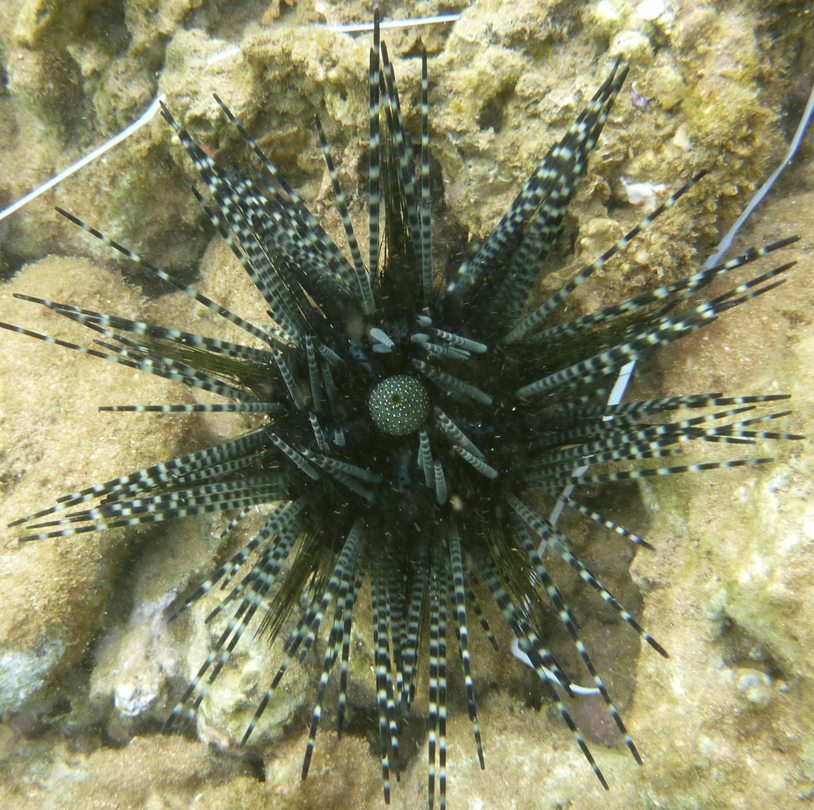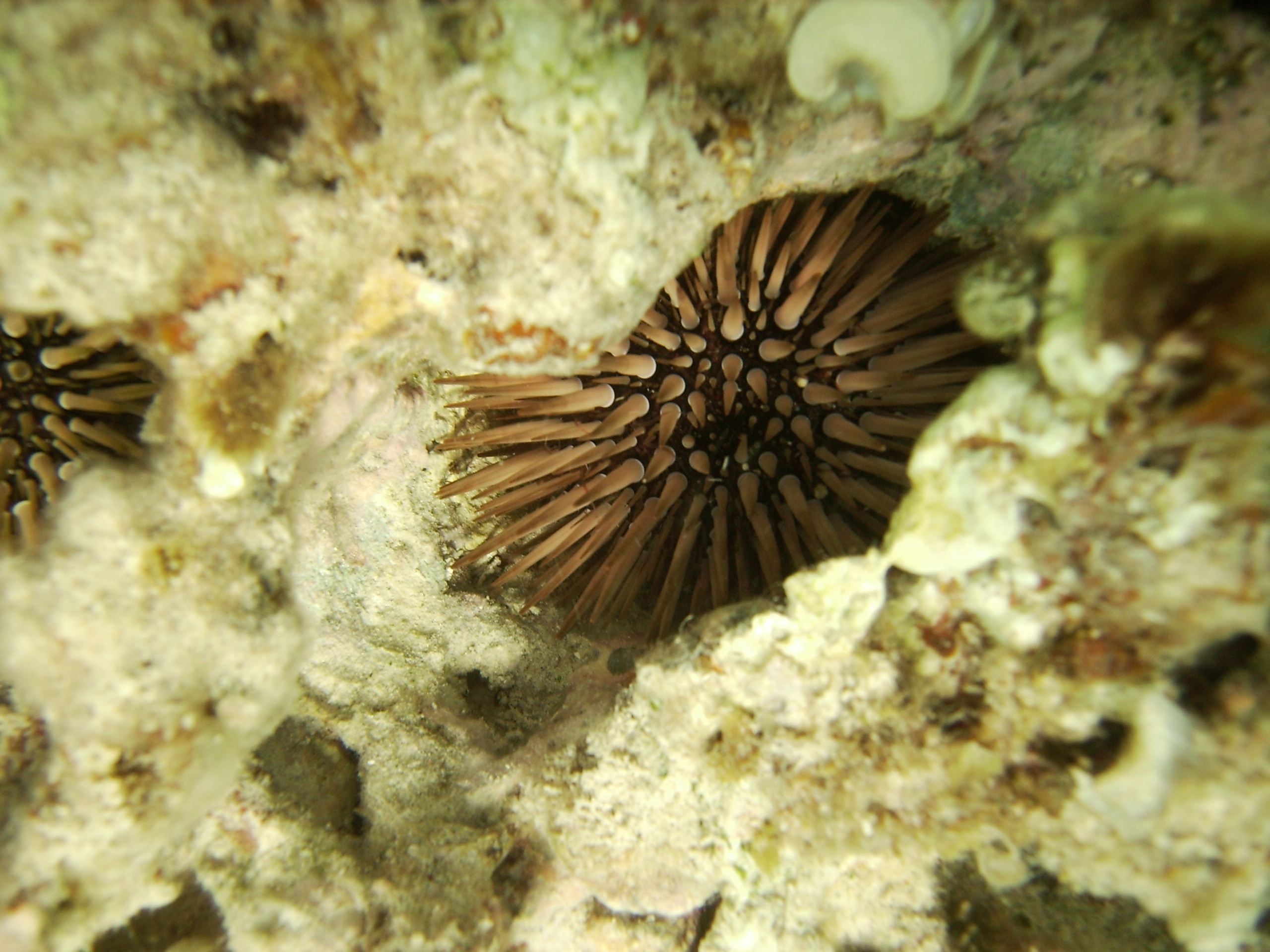Published in the Ocean Watch column, Honolulu Star-Advertiser © Susan Scott
October 29, 2012

A young North Shore wana with its balloonlike anal sac.
Last week, while snorkeling off Lanikai Beach, I found a huge, gorgeous black-and-white wana strolling along a stretch of white sand with all the confidence of an armored tank. Not many people stop to admire wana, but I do. Their spiky spines shimmer purple and blue in the bright sun, and when the animal waves those needles at me, I view it as a friendly warning: I don’t want to hurt you, but …
Wana, pronounced VAH-nah, is the Hawaiian name for sea urchins with slender, needle-sharp spines. Ancient Hawaiians named other types of sea urchins, too. For some individuals, those called wana were aumakua, or family gods. Others ate wana gonads raw, cooked or dried, but those who considered wana their aumakua neither harmed nor ate sea urchins.
Nor do I. Though wana are far from soft and cuddly, they are one of my favorite marine invertebrates.
The first time I saw a wana, I mistook it for a plant. But wana aren’t as sedentary as they first appear. These bristly balls walk around on sticky tube feet, gobbling up seaweed and anything else that can’t run away.
A sea urchin’s mouth is on its underside and consists of five moveable teeth with a fleshy, tonguelike organ at the center. Some sea urchins, called rock-boring urchins, can wear away solid rock with their self-sharpening teeth, creating cozy hollows in which they live.

Rock boring urchin. Scott Davis photo.
The other end of a wana’s digestive system, the anus, is at the top of the dome-shaped skeleton. You probably don’t want to take a super-close look at many animal rectums, but wana are exceptions.
The most common wana in Hawaii, called the banded urchin (Echinothrix calamaris), has an anal sac that when distended looks like a little black balloon with white spots. When you see one of these, you know you’re looking at a young animal, because in older wana a crab has taken up residence in the wana’s rectum and destroyed its anal sac.
In Hawaii nearly all mature banded urchins have their own parasitic crab (Echinoecus pentagonus), one-quarter- to one-half-inch wide. Commonly called sea urchin crabs, mature females live just inside in the rectums of this wana species, selectively picking out undigested algae, bacteria and other nutrients from the urchins’ wastes. This process demolishes the wana’s anal sac, which the animal apparently doesn’t need to thrive.

North Shore sea urchin, called wana. Susan Scott photo.
Smaller male crabs live outside the rectum on the urchin’s shell, apparently looking for love.
What with a mature wana waving its sharp spines in your face, it’s hard to get a close look at sea urchin crabs. I got a safe view of these odd-looking crabs at local biologists Keoki and Yuko Stender’s website. Check it out at tinyurl.com/97zlx6g.
©2012 Susan Scott